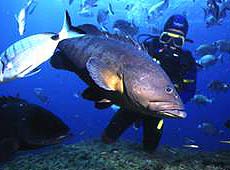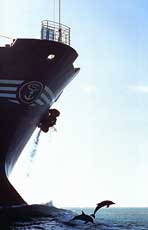The Mediterranean Context
For political and geophysical reasons, most Mediterranean states have not declared Exclusive Economic Zones (EEZ) beyond their territorial seas. Should all Mediterranean States declare their EEZs, the entire Mediterranean would be covered with EEZs and the High seas would disappear. The Mediterranean comes under the High seas regime by accident, as the areas covered by the High sea could fall under national jurisdiction.

The two following consequences can be established:
1. More than 80% of the semi enclosed sea falls under the High seas regime. In the High seas, the principle of freedom of the seas remains valid, although this does not mean ships are freed of obligations. The law applied to them is the law of their Flag's State. Implementation of international agreements is a challenge in the High seas, whether at regional or global level. The High seas regime creates a big gap on governance of the oceans and the Mediterranean.
2. Some Mediterranean countries have recently undertaken national initiatives to extend their jurisdiction in specific areas, for example fishing or ecological competence. If such moves continue, the entire Mediterranean will be covered by national maritime zones (sui generi EEZ) lacking coordination and affecting the integrity of a Mediterranean conservation regime.
The Mediterranean Sea represents an interesting and stimulating case for strengthening governance and international law in relation to oceans. The Mediterranean experience brings support to global discussions on means for achieving the goals set at the World Summit on Sustainable Development to establish effectively managed networks of marine protected areas, consistent with international law, and based on scientific data, by 2012. Specially protected areas of Mediterranean Importance, which can be inscribed on all Mediterranean waters according to the Protocol on Specially Protected areas and biodiversity in the Mediterranean (signed in Barcelona on 10 June 1995 and in force on 12 December 1999) of the Barcelona Convention represent one of the most important tools for conserving and managing the Mediterranean Sea and should therefore be supported.

What
is the centre doing on governance
of the sea?
1. Enhancing linkages, networking and partnerships among IUCN members and Commissions in the Mediterranean region to support the programme.
2. Developing technical bridges between global conventions' processes and the Mediterranean region.
3. Raising awareness on the legal status of the Mediterranean and marine protected areas in the High seas
Relevant Bibliography
Pr Tullio Scovazzi: "Marine Protected Areas on the High Seas: Some Legal and Policy Considerations", International Journal of Marine and Coastal Law, 2004.
Tullio Scovazzi: "Recent Developments in the Barcelona System for the protection of the Mediterranean against pollution ", The International Journal of Marine and Coastal Law, Volume 11, n°1, mars 1996, p. 95 - 112.
Tullio Scovazzi : Marine specially protected areas: the general aspects and the Mediterranean regional system, International Environmental Law and Policies series, Kluwer Law International, 1999.
Gemma Andreone, "Legal regime of Fisheries in the Mediterrenean: some issues concerning Italy", in Italian Yearbook of International Law, 2001, vol.XI, Kluwer Law International, pp.231-261.
Claude Impériali (Ed.) : L'Effectivité du droit international de l'environnement, Contrôle de la mise en oeuvre des Conventions internationales, CERIC, Coopération et Développement, Collection dirigée par Jacques Bourrinet,.Economica, 291 p., 1998.
Daniel Vignes, Giuseppe Cataldi et Rafael Casado Raigon : Le droit international de la pêche maritime, Collection de droit international, Editions Bruylant, 2000.
Lilia Khodjet El Khil : La pollution de la mer Méditerranée du fait du transport maritime de marchandises, Presses Universitaires d'Aix-Marseille, 556 p., 2003.
Davor Vidas and Willy Oestreng : Order for the Oceans at the Turn of the Century, Kluwer Law International, 1999.
Les Zones Maritimes en Méditerranée, Revue de l'Indemer, Actes du Colloque, Monaco 4-6 Octobre 2001.
José Juste: "Regional Approaches to the Protection of the Marine Environment", Thesaurus Acroasium, Protection of the Environment for the new Millennium, Ed. by Professor Kalliopi Koufa, Sakkoulas Publications
René Jean Dupuy et Alain Piquemal : Collection Espace and Ressources Maritimes, N. 14, Pedone, 2001
For further information, please contact François Simard.
|